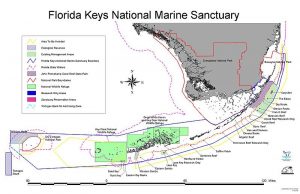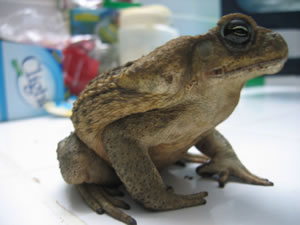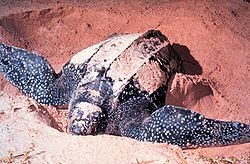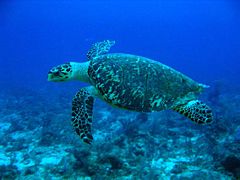Category Archives: Endangered
Marine Lab in Florida Releasing Coral Fragments to Help Restock Reef in Keys
This past Wednesday, researchers at the Mote Marine Laboratory released four different kinds of coral at two different locations in the Florida Keys National Marine Sanctuary. This action, which was sanctioned by the Sanctuary officials and the Florida Fish and Wildlife Conservation Commission, is supposed to help try out the practicality of using “test tibe” coral to restock the damaged or depleted reefs of the world.
One of the sites chosen for this momentous test, Mote, is utilizing coral grown in a local nursery to try and replenish stocks of stagorn coral. The second location was decided upon because it seemed to be especially hard done by with the cold snap running through, which caused a coildwater bleaching even this past January.
“Now is an especially good time to do this study because of the cold snap in January,” explained director of Mote’s Center for Aquaculture Research and Development, Dr. Kevan Main. The MCARD reared the coral fragments in partnership with Mote’s Center for Coral Reef Research at Mote’s Tropical Research Laboratory on Summerland Key. “During that cold event, many of the fragmented corals growing at the inshore release site were lost. This gives us an opportunity to see whether we can jump start the recovery of corals at this site with cultured fragments.”
Its good to see that some progress has been made to help the world get its reefs back in tip top form. As we all know, coral reefs are a vital part to the well being of the world’s oceans, and if they go, soon all life in the sea will go.. And we know where that leads….
Cane Toads Wiping the Floor With Crocs!
Cane toads are killing off the freshwater crocodiles which make their home in the Victoria River District in Australia. The toads have been credited for the demise of hundreds of these crocs, and don’t show any sign of letting up any time soon.
A group of scientists have been studying the happenings of the Victoria River since 2005, to take a gander at how the toad is effecting the local wildlife.
The leader of the group, Dr. Mike Letnic, has recently returned from a scouting trip to the area.
“I haven’t put all of the figures together yet but when we look at the data from Victoria River Downs, where the cane toads came through in 2006, the crocodile populations are down as much as 80 per cent.
“We did test some crocodiles a few years ago, some of the survivors, but we found no evidence that they had any immunity.
“The other idea we had was that the crocodiles might learn to avoid toads and we found a little bit of evidence in the laboratory, that crocs will learn.
“But in the wild it seems to be a different story, we keep seeing crocodiles chomping on toads.”
Yes, you would think the crocs would learn, however, seems that when a croc goes to chomp a cane toad, none of the other crocs are watching… Seems to me the crocs need to come up with a defensive plan, and soon, before they are all wiped out.
More Than 500 Lionfish Caught by Divers in Keys Derby
You can forget about such trivialities as the amberjack or snapper. Over one hundred divers have managed to bring in more than five hundred Indo-Pacific red lionfish during the first group effort to help decrease the numbers of this wily invader which has set its sights on the Florida Keys National Marine Sanctuary.
The first of three such get togethers, cleverly dubbed lionfish derbies, brought in some twenty-seven teams which were all gun ho on earning the sweet cash and prizes being dangled in front of them to bring in the most, biggest, and mot tiny lionfish. The big enchilada, one thousand dollars, was given to the group which managed to snare in one hundred and eleven lionfish.
The next “derby” is shceduled to take place this coming October 16th, weather permitting, at Keys Fisheries restaurant in Marathon, and the final event is said to be November 13th at the Hurricane Hole Marina in Key West.
A representative of the Reef Environmental Education Foundation, Lad Akins, has commented that the lionfish are being released inadvertently by pet owners into the Atlantic, and since they have no natural enemies, they are free to breed and take over.
These lionfish have become quite an item, them being offered up in restaurants and such to help keep them down.. Only time will tell if we are winning the battle, or losing…
Dorset Breeding Colony Overjoyed by First Seahorse Baby
Many people are happy, and patting themselves on the back after finding the first baby sea horse at one of the leading breeding colonies in Dorset.
The tiny fry, what you call a tiny baby seahorse, discovered at Studland Bay is 4 centimeters in length.
The Seahorse Trust has claimed that the seahorses are an endangered animal, as many boats and mooring chains are taking big hunks and tearing up the seabed.
The Marine Management Organization, a government entity, has said that although research has been ongoing into the subject, there was no conclusive evidence that mooring chains are a threat to seahorses.
The Seahorse Trust is pushing for the protection of these amazing animals under the Wildlife and Countryside Act, which came into existence in 2008.
“The trust and its volunteer divers have seen adults, pregnant males and juveniles on the site before but never a baby (fry),” a representative of the Seahorse Trust has commented.
“It does not mean they are thriving, quite the reverse, they appear to be hanging on in there against the odds of hundreds of boats dropping anchors and mooring chains ripping up the seabed, destroying their fragile home.”
The main goal of the Seahorse Trust is to get those nasty moorings replaced with more environmentally sound ones which do not damage seagrass, and for boat users to switch to these new devices.
Hopefully the discovery of this new baby seahorse will prompt some more interest in the issue, and something will be done to help protect these magnificent sea creatures.
Sea Otter Numbers Are Down in California Survey Says
After 10 years of a steady recovery, the southern sea otter – a species on the federal list as being threatened – populations are declining for the second year running, so says a population survey conducted by researchers with the U.S. Geological Survey.
“We have seen a decrease in sea otter numbers throughout most of their range, particularly in those areas where most of their reproduction occurs, while pup counts have dropped to 2003 levels,” explains the head researcher for the yearly survey, Tim Tinker of the USGS Western Ecological Research Center. “A number of human and natural factors may be influencing this trend, and we are working to better understand what those are.”
The estimates of the population are calculated as three year averages of the yearly results of the surveys, which make allowances for variables which arise during different times of observation and give researchers a better picture of the trends in abundance. The estimate this year – averaging out the results from surveys from 2008, 2009 and 2010 – is a mere 2,711 otters. This signifies a 3.6 percent drop in the population overall, and an 11 percent drop in the number of otter offspring, compared to the estimates of 2009.
“Remember, sea otter health can tell us a lot about the health of the coastal waters that humans also enjoy,” Tinker reiterates. “So, we’re eager to learn more.”
Well, if that’s an indication.. Our world might just be in a heap of trouble.. Let’s hope they get to the bottom of it quickly.
Rare “Princess” Turtle Makes Way Home After 32 Years
Well, they say turtles are slow, but this particular beauty made a surprise comeback to a Malaysian beach after an astonishing 32 years. A report issued Friday hailed this return as a “miracle” by conservationists and rekindling hope that the endangered species is not quite gone yet.
The leatherbacks, the biggest of all the sea turtle species, were at one time the stars of the show at Rantau Abang beach in the northern state of Terengganu. However, overfishing, poaching, and pollution have caused the population of these turtles to take a nose dive over the years, to the point of being critically endangered.
This turtle, aptly named “Puteri Rantau Abang” or Rantau Abang Princess, and identified by some special markings, had returned last month to finally end the long period of time that turtle sightings were rare, which began in Terengganu in the 1980’s.
“It is a miracle that leatherback turtles are making a comeback to this area,” commented, Ahamad Sabki Mahmood, the Malaysian Fisheries Department director-general.
He went on to explain that the return of this turtle proves that Rantau Abang is once again being made a nesting ground for turtles, he is hoping that the next possible nesting period between the 15th of August and 20th of August that more turtles will make an appearance.
This just goes to show you that old habits die hard, and that mother nature triumphs over all. Hopefully the future turtles which land at the beach will receive as warm a welcome.
Filipino Government Lays the Smackdown on People Poaching Sea Turtles
Two years after their detainment, 13 poachers, from Vietnam, who were caught with the dead bodies of 101 endangered Hawksbill turtles (known in scientific circles as Eretmochelys imbricata) near El Nido, northern Palawan, in the Philippines, have finally been convicted and sentenced to hefty fines along with some jail time.
On the 22nd of June, The Regional Trial Court of Puerto Princesa, Branch 50, after much deliberation, decided that the Vietnamese poachers should face jail time for their heinous acts, and will receive anywhere from 6 to 18 months, plus have some hefty fines to pay.
Since the poachers have been sitting in jail since the 2nd of September 2008, the court also decided that they will only have to cough up the money for the fines.
Two Filipino gunboats apprehended the Vietnamese boat transporting the poachers five miles east of Cabaluan Island near El Nido on August the 29th 2008. In a sheer act of desperation, the 13 crew members aboard the boat tried to sink her by flooding the holds, however were preented from doing so by law enforcement officers.
When the cargo holds were explored, they discovered the corpses of 101 Hawksbill Turtles, classified as being critically endangered, which is the highest risk rating for any living animal. This rating was handed down by the IUCN, the International Union for Conservation of Nature, some time ago.
So, they did the crime, they served the time, now all that remains is for them to pay the fine… Although, is it really enough? Did the poachers learn their lesson? Or were they simply sorry they were caught?
Five Penguins Win Endangered Species Act Protection:
Five penguins species are finally getting a new lease on life, after being awarded protection under the U.S. Endangered Species Act. This protection is being awarded after a 2006 petition initiated by the Center for Biological Diversity, in conjunction with two lawsuits which were filed together with Turtle Island Restoration Network.
The decision made by the Interior Department will finally put the Humboldt penguin of Chile and Peru, and four different New Zealand penguins, on the threatened list.
“Protecting these penguins under the Endangered Species Act gives them a renewed chance at survival,” explained Shaye Wolf, Center biologist “Unfortunately, in today’s finding the Obama administration failed to acknowledge climate change as a threat. This administration won’t be able to help penguins survive the climate crisis if it doesn’t admit that it’s a problem.”
These penguins are acing some very real threats from things such as ocean acidification, climate change, and commercial fishing. The designation handed down today will hopefully raise awareness about the situation these penguins face on a day to day basis, increase funding for research and conservation, and provide additional scrutiny of any U.S. government approved activities which could cause harm to both the penguins and their respective habitats.
With the oceans warming up, the sea ice melting, and overfishing, the penguins food supply of kril and fish is more scarce then ever..
It’s about time something was done about the problem, let us hope it isn’t too late..
Fishermen Reel In Rare Catch, “Could be last of its kind”
Fishermen have managed to reel in an edangered species of shark off Plymouth and experts are saying that it could be the very last of its kind swimming about the UK waterways. It very well might be. The angel shark is classified as a “critically endangered” species, and has been believed to be extinct in the North Sea, and is very nearly so in other areas of the Mediterranean. It is thought that there are large pockets of them floating around the Canary Islands, and many environmentalist groups are pushing for urgent action to prevent this magnificent species of shark from disappearing off the face of the planet.
The extraordinary catch, identified as an angel shark, was brought ashore to the Barbican Fish Quay market this past Tuesday.
Some resident experts at the Marine Aquarium has said that this is the first time an angel shark has made an appearance in a UK fish market since 1998.
In April of 2008, the UK Government granted the angel shark full protection under the Wildlife and Countryside Act. This means that it is illegal to fish them, trade them, export them, and sell them. However, the animal has yet to be added to the OSPAR Priority List of Threatened and Endangered Species, even though the proposal to get it on there was deemed appropriate the by Study Group on Elasmobranch Fishes, the general motion was quashed and the nomination rejected.
The fisherman who reeled in the shark, got into contact with the aquarium to tell them of the mistake – that they had inadvertently reeled in an angel shark which was about 1.2 meters in length.
An employee of the aquarium, John Crouch, explained: “Globally this species is listed as critically endangered and it was thought to have been fished to extinction in the North Sea in the 1990s.”
“This may well be the last of its species ever to been seen in UK waters.”
He went on to explain that this species of shark are especially vulnerable to accidental fishing, such as bottom trawling, because they generally prefer to make their homes in shallower waters closer to shore and are sometimes caught by any number of fisheries in the area.
He went on to add: “The angel shark is especially vulnerable due to its very long life span, around 35 years, and the fact that they do not mature until they are in their teens.”
“That’s a very long time to evade being caught when each fishable part of the North Sea is trawled seven times each year. It is thought that there are still populations of this species around the North of Africa and off the Canary Islands which is perhaps where this one came from.” John went on to explain that most of the native shark species have seen a recent decline of 90 percent since the 20th century began due to overfishing and hapless fishermen.
Giant bluefin Tuna sold in Japan
A whale of a tuna was reeled in off Japan, and turned quite a few heads at a fish market in Tokyo on Friday. This was the largest recorded tuna reeled in since 1986, weighing in at 445 kilograms (981 pounds), and sold for 3.2 million yen ($36,700).
“Many of the people who work at the market have never seen a tuna that big,” said a government official from the Tokyo Metropolitan Government, who regulate the Tsukiji fish market. It is interesting to note that the Tsukiji fish market is one of the largest fish markets in the world.
The monstrous tuna, which was auctioned off at 7,200 yen per kilogram, had already had its guts removed and gills cleaned off, which means this whopper of a fish must have weighed more when it was first reeled in off Nagasaki prefecture this week, the official continued.
“It is extremely rare to see a tuna heavier than 400 kilograms,” he said. Yes it is very rare indeed. Tuna generally only reach the 200 kilogram mark, and it is rare to find one of this size.
The largest Japanese caught tuna ever sold at the Tsukiji fish market was a 496 kilogram specimen reeled in in the spring of 1986. However, the largest tuna recorded in the world came from Canada, caught in 1995 weighing in at an astounding 497 kilograms.
There has been a steep decline in global tuna stocks due to overfishing over the past decades. This has caused Western nations to put in a motion for a trade ban on the endangered Atlantic bluefin Tuna.









